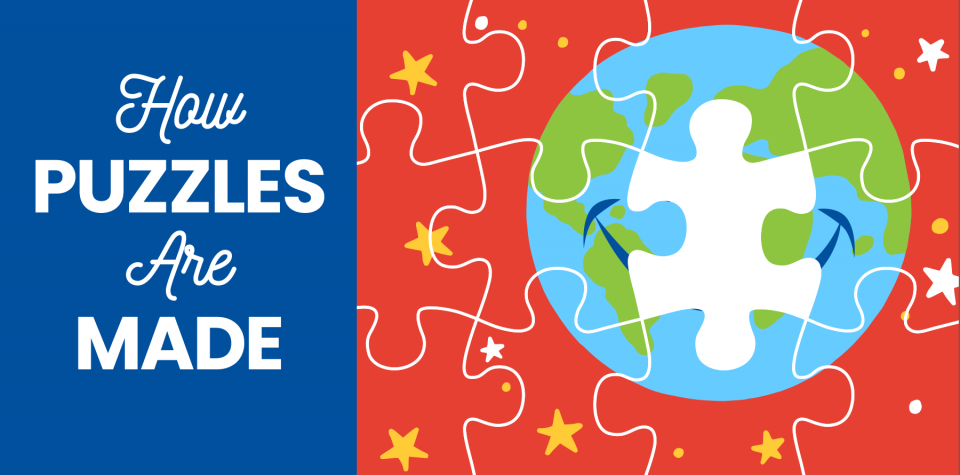
How Puzzles Are Made
Your kids probably love putting together puzzles, but do they know how they’re made? It’s a long—and very cool—process. Share this look behind the scenes, and then use our instructions to help them create their own unique puzzles using simple supplies!
It Starts with Art
Take a close look at any factory-made puzzles in your home, and you’ll see that each piece consists of paper attached to a cardboard core. Some puzzles have paper on the front and the back, while others have paper on just one side.
At least one of those paper layers has an illustration or a photo on it, and puzzle production starts with that image. To create it, a group of designers talks through what they want the puzzle to look like, and then someone creates or finds the image. Typically, a good image includes bright colors and lots of details that will help puzzle solvers figure out which pieces go where. Then it goes through several rounds of revision before being finalized and sent to a factory for production.
Glue, Cut, Package
Inside the factory, the picture is printed on huge machines and laminated onto pieces of cardboard.
Then comes the amazing part. To turn that picture on cardboard into a puzzle, the factory stamps it with a die—a custom piece of sharpened metal exactly matching the size and shape of the puzzle—that cuts it into pieces.
Diemakers must make sure that a puzzle piece never accidentally fits into the wrong spot, so each piece must be unique. Not a difficult task for a 45-piece puzzle for kids, but mind-boggling for a 3,000-piece adult puzzle. For some puzzles, diemakers spend hundreds of hours creating the dies by hand!
Once the cuts have been made, the puzzle pieces flow down the production line on conveyor belts and end up in bags, which are sealed and packaged in boxes for delivery.
Together Time
Now that you know how puzzles are made, you can set up your own puzzle factory at home! Just like the professionals do, start with the art, glue it to cardboard, and cut out the puzzle pieces. We’ve laid out step-by-step instructions below.
Supplies:
Coloring sheets (Try our free, printable Early Explorers Coloring Book.)
Scissors
Glue
Cardstock or lightweight cardboard
Directions:
Step one: Have your kids select which coloring sheets they’ll turn into puzzles. Remember, it helps if the art has lots of details!
Step two: Have the kids color the sheets to get them ready for the puzzles.
Step three: Once the kids declare the coloring finished, glue the completed coloring sheets to a piece of cardstock or lightweight cardboard. This will provide a sturdy back for the puzzle pieces.
Step four: Have your kids cut the cardboard-backed coloring sheet into pieces. For an easy puzzle, they can cut rectangles or squares. For a more difficult one, encourage them to experiment with unusual shapes. Younger kids may need you to cut through the cardboard for them.
Step five: Scramble the puzzle pieces by tossing them into an empty container, then ask your kids to put them back together. To keep the fun rolling, kids can make puzzles for each other or create one-of-a-kind gifts for their friends!
